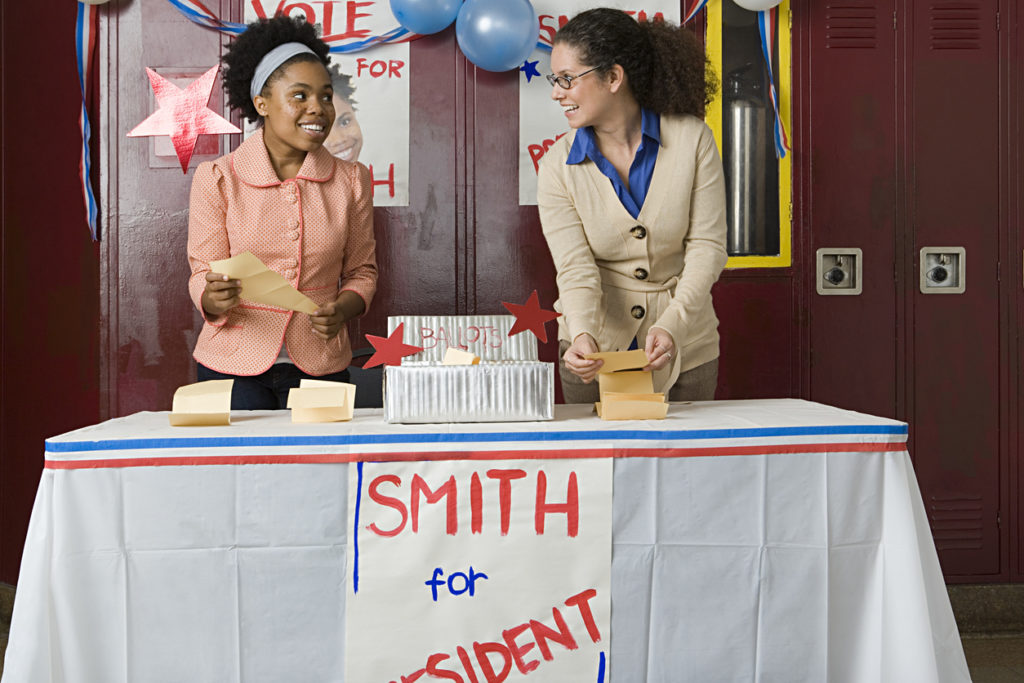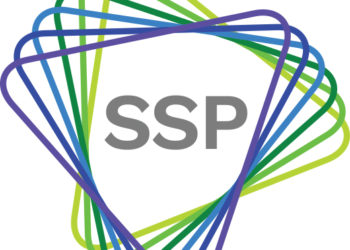This week is the Society for Scholarly Publishing (SSP) Annual Meeting in Chicago. Although all SSP meetings are special, as you’ve already heard, this year is SSP’s 40th anniversary. SSP has changed a great deal over the years and no single role within the vibrant volunteer community is more tuned in to changes on a yearly basis than the president.
So this week we’ve asked past SSP Presidents: What surprised you the most about SSP during your presidency?

Kent Anderson: What surprised me as SSP President was that I was able to see, for really the first time in my experience, the consistency and scope of volunteer effort and devotion to the SSP mission and community. Seeing it through the keyholes of a Committee or even from the Board was one thing, but to see it from the three-year vantage point of President Elect, President, and Past President was very different and very inspiring. SSP is a collective endeavor, and the talent, energy, and ideas of many different people make it happen. I saw that full-on for three years in the Presidential rotation, and it was really amazing to behold.
Sue Kesner: I expect that every president has been overwhelmed with the numbers of dedicated volunteers! No arm twisting, these folks REALLY wanted to help. And I always had the impression this volunteer spirit came from within the individual rather than pressure from their own organization. Many of those same people, some very early in their careers then, are still active and leaders, 10 years later.
One of the active discussions of my tenure is seemingly small but I contend has had a major impact in shaping SSP. We are the Society for Scholarly PublishING, not the Society for Scholarly PublishERS…
One of the active discussions of my tenure is seemingly small but I contend has had a major impact in shaping SSP. We are the Society for Scholarly PublishING, not the Society for Scholarly PublishERS. The strength of active participation from librarians, vendors, publishers and even then, researchers, is part of SSP’s secret sauce. It was 10, 15 years ago and continues to be today.
Lois Smith: What surprised me the most during my SSP presidency was the increased interest in volunteerism. Having joined back in the late 1980s, I was more accustomed to hearing that it could be challenging to find members to fill positions on committees. I think one reason for this increase is that as the Annual Meeting program content has expanded, more people have become aware of its value, whether because they were enlisted as presenters or because they didn’t want to miss hearing about the latest developments and innovations.
Howard Ratner: When I opened the SSP Annual Meeting in 2015, I started with a quote from musician extraordinaire David Byrne. In a 2007 interview with Thom Yorke of Wired, he made the thought-provoking comment, “You create a community with music, not just at concerts but by talking about it with your friends.” This is just as true for our diverse world of scholarly publishing as it is for music. SSP is all about librarians, publishers, societies, and publishing vendors intertwined into a scholarly publishing community. Back in 2015 and still today, the SSP website proclaims, “SSP is the community for everyone engaged in scholarly publishing, an organization where they find forward-thinking programs, important dialogues about the evolving scholarly system, and partners to share their expertise and progress.” So true!
A popular definition says, “Networking is about making connections and building enduring, mutually beneficial relationships.” The SSP community encourages you to carry on those life-long conversations that span from meeting to meeting and to make some new connections to broaden your network (and your perspective) as well. At SSP events — especially the Annual Meeting – everyone learns from the engaging speakers and our colleagues old and new. The collegial spirit held at every SSP event reminds me why I stay in this corner of the universe. It is the people – the passionate people that want to learn from each other. Some of the deepest professional relationships I hold dear happened right here at SSP.
The SSP community encourages you to carry on those life-long conversations that span from meeting to meeting and to make some new connections to broaden your network (and your perspective) as well.
Judy Holoviak: My big surprise as SSP President (1990-92) came shortly after my election and before I assumed office. The Society was in a precarious financial position – so much so that there was legitimate concern about whether we could survive. As I look back, I must admit that what followed was not so much surprising but rather gratifying. A number of quick actions were needed to reduce expenses, like moving the sites of the SSP Roundtable and the Annual Meeting to locations where we could hold the line on registration fees and avoid steep contract penalties. But we really needed to have good attendance at those meetings to build the income side of the ledger and maintain confidence in SSP’s mission.
Many leaders in the scholarly communications world answered my plea for help. Some of these colleagues had not previously been active in SSP, but they believed in the premise and wanted to see the Society succeed. They used their powers of personal persuasion to assure that we had very strong intellectual programming that would attract more than the former core of participants. (I’d hate to guess how many “chits” were called in on behalf of SSP during that period.) Through their efforts, attendance over the two years of my presidency grew, but more importantly, SSP built on its reputation as the place to be. Hallway conversations were robust; attendees actually stayed through the final session.
I won’t deny that when I was given the SSP gavel in 1990, I was a bit frightened about whether it would all work. But I must also admit that SSP had an angel. Fred Spilhaus, then executive director of the American Geophysical Union and one of the trio who founded SSP, picked up the lease SSP had on a townhouse in Washington, D.C., and used the space for AGU staff overflow. That action removed a significant financial liability and gave SSP the flexibility to contract for management services, which strengthened the administrative side of the organization while we were building the program side.
As one of the small group who founded SSP, I hope that I’ll be forgiven for waxing a bit nostalgic. At this milestone, I am so proud to see how our baby has matured and grown even beyond our original expectations.
As one of the small group who founded SSP, I hope that I’ll be forgiven for waxing a bit nostalgic. At this milestone, I am so proud to see how our baby has matured and grown even beyond our original expectations. Congratulations to all who made the successes possible.
Ray Fastiggi: I would say that I was most surprised by the diligence of the staff at the Resource Center, especially Ann Mehan Crosse. In my Presidential year of 2009-2010, Ann was unbelievably supportive of me. During our weekly calls that year, she never failed to provide timely updates on SSP activities. She handled all of this with wit and grace. Ann was never flustered by anything that happened, whether it was a threatened labor dispute in San Francisco or smoothing ruffled feathers of an unhappy member. She even helped my wife arrange for my farewell party at the Hilton that June. Although I had been Secretary/Treasurer for nine years before I became President, I had never quite realized how hard the staff worked to pull it all off. The San Francisco meeting was one of the largest Annual Meetings up until that time, but everything went smoothly and without a hitch. I will always have fond memories of my year, and I thank all of the staff members who helped and supported me so much. My best wishes to SSP on a successful 40 years and for many more to come.
Bill Kasdorf: I first attended SSP at the second annual meeting, and I’ve been active ever since, so I have a four-decade perspective. What I have been most amazed by in all those years is SSP’s extraordinary responsiveness and resilience, driven by the members, not a manager. (I’ll get to why that’s a surprise and what it has to do with my presidency in a minute.)
Early on, we saw the danger of becoming — not an old-boys’ club, since women have always been in the leadership—but dominated by the founding generation. So we changed the leadership structure, with terms of service and a pattern of rotation that was designed to keep bringing new perspective and new blood into the organization.
Early on, we saw the danger of becoming — not an old-boys’ club, since women have always been in the leadership — but dominated by the founding generation. So we changed the leadership structure, with terms of service and a pattern of rotation that was designed to keep bringing new perspective and new blood into the organization. I especially appreciate how well defined each year of a president’s three-year service is, as President Elect, President, and Past President, each having distinct duties, designed to prepare the President for leadership and keep his or her involvement with their successor. We did a similar thing with committee chairs: back when I chaired the Education Committee, having two co-chairs was an innovation.
A distinguishing aspect of SSP is the extent to which we represent all parties in the scholarly publishing ecosystem. When we realized that we didn’t have enough involvement from librarians, we created special programs for them, and a special rate structure. It worked. When we realized we needed to get more early career people involved, who are less likely to be funded by their employers, we created special programs for them too — and made sure that when they attend an annual meeting they aren’t lost in a sea of long-timers who all know each other. The mentorship program has been another big success.
There are many, many more such examples. One recent one: recognizing the need for an Executive Director. What would we do now without Melanie?
Why is this a surprise? I’m involved in organizations in a wide range of publishing sectors. None of them come close to SSP in this regard.
And what does it have to do with my presidency? I was president for 9/11. I had been meeting with the University of California Press on September 10, and was staying at a hotel at SFO airport because I was flying directly to Philadelphia for the board meeting and Top Management Roundtable the next day. As I was packing for the plane I heard the news. I didn’t leave that hotel for five days.
Fortunately, cell phones had been invented then. 😉 The responsiveness of the board was truly amazing. Not everybody thought alike: before we realized all flights were going to be cancelled indefinitely, Fred Spilhaus implored me not to cancel the meetings; he didn’t want to let the terrorists win. But of course we had to, and right then, within an hour or so. At that time, the Top Management Roundtable was our third most important source of revenue, after membership dues and the annual meeting. But at the end of the day everybody came together. The hotel let us out of our obligation. We rescheduled the Roundtable for DC adjacent to PSP, the following February, when a lot of our members would be there. So my presidency year is no doubt the most money-losing year SSP has experienced, but by the very next year we were whole again.
For those of you thinking “what’s the Top Management Roundtable?”: more responsiveness. We realized we shouldn’t be having meetings that were just for top management. SSP never stops getting better.
October Ivins: Since I had chaired committees and been a Board member, the processes and procedures were familiar to me. What I found surprising was some people, including Board members and members of long standing, who seemed to forget a founding principle from time to time. For example, during the early years of the development of open access, I was asked why SSP didn’t take a position and announce its opposition. I reminded people that SSP was founded to create a community that could foster dialogue among people employed in all areas of scholarly communications and that we couldn’t and didn’t want to take positions. Instead, I invited them to help plan programs or post messages that would help increase understanding of how open access business models did or could function, what risks they might present, and how they could be improved. Rather than avoiding difficult and potentially divisive topics, I think SSP has been very successful at turning heat into light in this and in many other areas.
SSP was founded to create a community that could foster dialogue among people employed in all areas of scholarly communications and that we couldn’t and didn’t want to take positions.
Jennifer Pesanelli: What surprised you the most about SSP during your presidency? Initially, I read that too quickly and thought it said, “What surprised you the most about your SSP presidency?” To that, my immediate response was how quickly the year went! But really, the answers are related. As I complete my term as president of SSP, I do marvel at how quickly it went, and I attribute much of that to the incredibly engaged, highly productive volunteers and the amount of work that was accomplished by their efforts. I would be remiss if I didn’t include both Melanie Dolechek and Helen Szigeti, SSP’s Executive Director and Program Director, respectively, in this consideration, and some of the Kellen staff as well. The volume of work that was produced by SSP volunteers and staff in the past twelve months was both surprising to me and impressive! Between all of the very public facing activities such as the regional events, the educational programs, the e-newsletters, the daily blogging and commenting in the Kitchen, and all of the behind the scenes activities of the nearly twenty committees, task forces and staff, the level of engagement and productivity is really remarkable.
The volume of work that was produced by SSP volunteers and staff in the past twelve months was both surprising to me and impressive!
My initial intention as President was to attend at least one of every committee and task force regular calls and participate on an ongoing basis throughout the year as much as possible. There were some weeks when I’d have between 5 and 7 SSP activities on my calendar. Granted, I didn’t attend nearly all of the calls, but I dialed in any time I could. From the bird’s-eye view, the sight was something to behold! The majority of these calls were well-run and productive with agendas, action items, and follow up to keep things moving. Ideas and recommendations were sent to the Board. The strategic plan was reaffirmed and expanded.
I’ve worked with many societies in the past 20+ years of my career, and they aren’t all so productive and effective. SSP is a highly active and hard-working mission oriented organization, and I’m truly proud to have served as President.
Ann Michael: I was SSP President immediately following Howard Ratner. During Howard’s tenure we defined the role of SSP Executive Director (ED) and conducted the interview process. My first act was offering Melanie Dolechek the job. I won’t call it a surprise (because it wasn’t), but my greatest joy in being SSP President was seeing how well Melanie worked with staff and volunteers. Once she was on board, it was so clear that this was a critical role we needed to fill to ensure SSP’s continued relevance and growth. The role of ED has given us even greater continuity than the SSP Board, staff, and all of the committed volunteers were able to achieve on their own.
On behalf of SSP and all of the past, current, and future presidents, I’d like to thank all of our many volunteers, meeting attendees, and staff for their engagement. SSP would not be what it is without you and through your involvement SSP will continue to learn and grow.
Discussion
1 Thought on "Ask The Presidents: What Surprised You Most About SSP During Your Presidency?"
For those who don’t know Fred Spilhaus recently passed away. https://eos.org/articles/former-agu-executive-director-a-f-fred-spilhaus-jr-has-died



